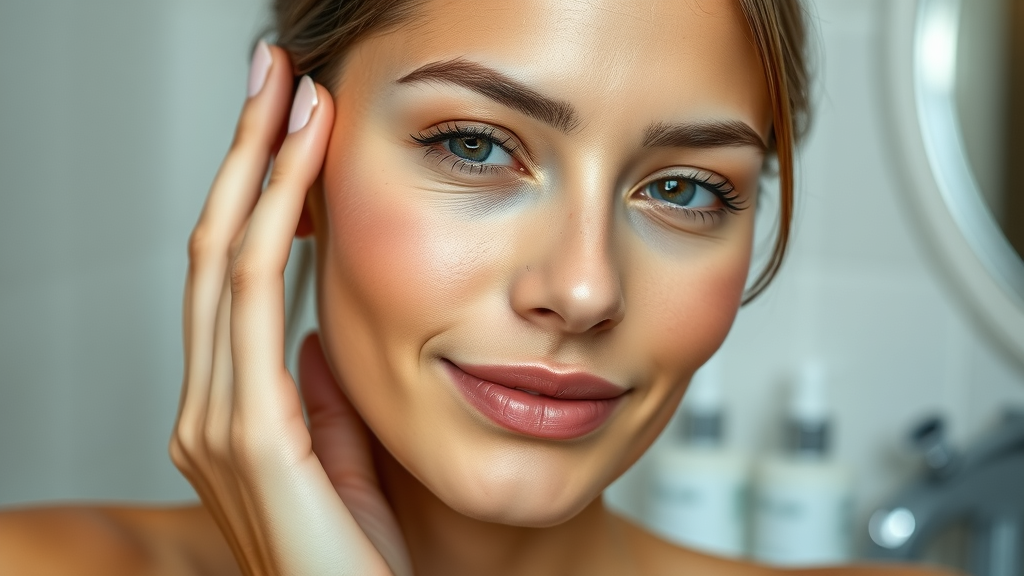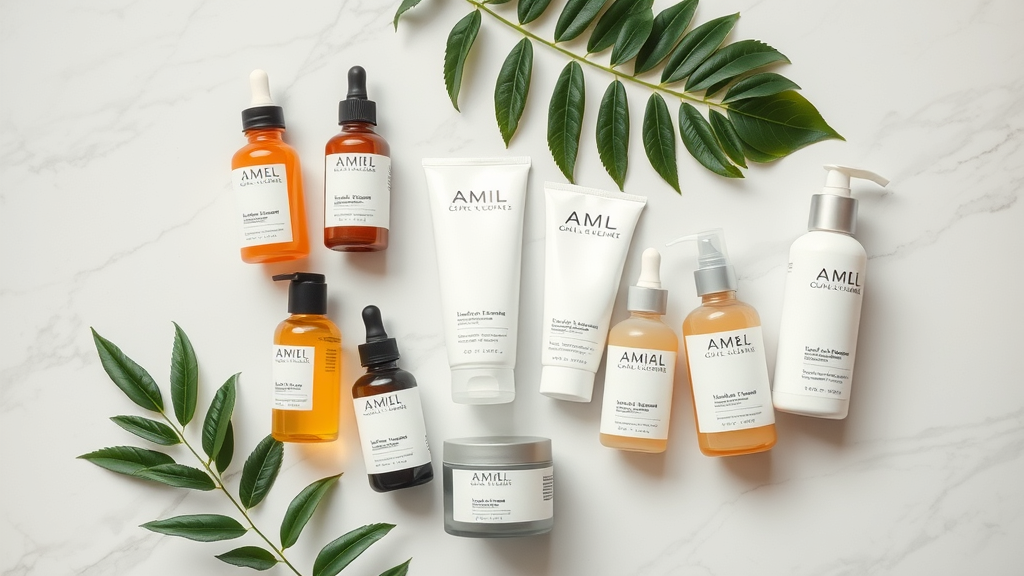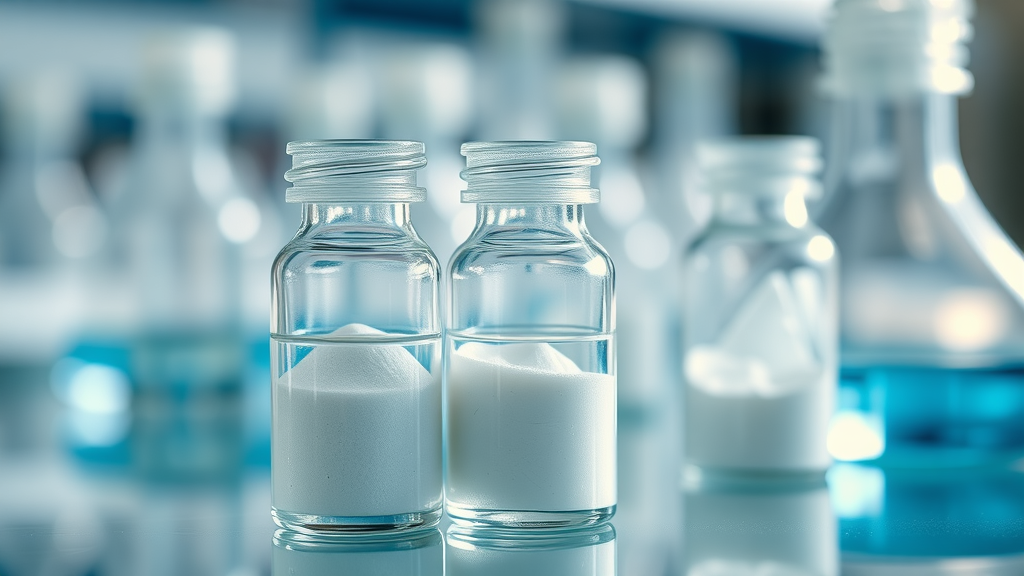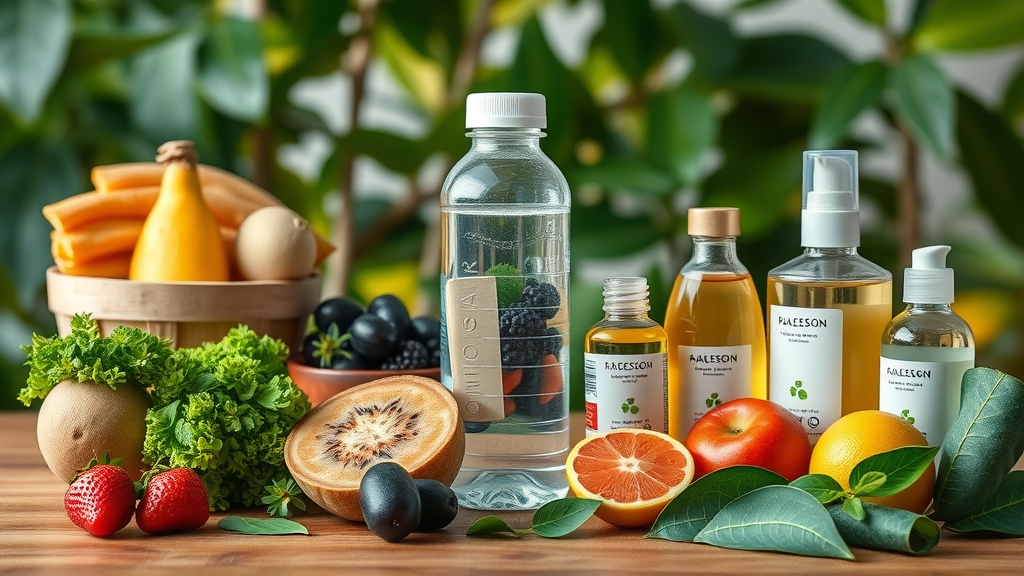Did you know 60% of people with oily skin struggle with breakouts daily? Mastering a simple AM and PM skin care routine tailored for oily skin can transform your complexion, effectively controlling excess oil to keep it matte and clear. Discover how easy consistency leads to lasting confidence and healthier skin.

In this guide, you’ll uncover dermatologist-recommended steps, the science of oily skin, key products, and practical ways to tailor your care routine for oily skin type. Let's demystify oily skin care and help you achieve real results.
The Science Behind Skin Care for Oily Skin
Effective skin care for oily skin begins by understanding the unique characteristics of your oily skin type and why your skin behaves the way it does. Oily skin is primarily caused by the overproduction of sebum, the skin’s natural oil, by overactive sebaceous glands. While sebum helps maintain natural moisture and protects your skin barrier, increased oil can easily lead to unwanted shine, enlarged pores, and frequent breakouts, especially if dead skin cells or dirt clog pores. Genetics, hormonal fluctuations, diet, and environment all influence oil production levels, with teens and young adults most commonly experiencing oily skin. Recognizing these factors is crucial for those seeking a daily skin care routine for oily skin that truly works.
What makes a care routine for oily skin unique is the need to control excess oil while maintaining your skin’s natural moisture balance. Unlike dry or sensitive skin types, oily and acne-prone skin thrive on lightweight, water-based products that won’t clog pores. Using the wrong care products, especially those not designed for oily skin types, can actually trigger more oil production and lead to more breakouts. Understanding the link between oily skin types, breakouts, and product choice is foundational for a successful skin care regimen. With the right approach, a balanced, clear, and shine-free complexion is within reach.
What causes oily skin and excess oil production
Why a targeted skin care routine for oily skin is different from other skin types
The relationship between oily skin type, breakouts, and skin care products

"Oily skin isn’t a flaw, but a sign that your sebaceous glands are working overtime. With the right care routine, you can regain balance and clarity." – Board-Certified Dermatologist
AM Skin Care for Oily Skin: Step-by-Step Morning Routine
Starting your day with a purpose-driven routine for oily skin can make all the difference in managing oily skin and reducing shine throughout the day. A consistent AM care routine sets the foundation for a comfortable, matte complexion and helps prevent mid-day shine and new breakouts. Begin with a gentle face wash to remove overnight buildup of excess oil and dead skin, preparing your skin for the next steps without completely stripping away its natural moisture.
Next, a balancing, hydrating toner preps the skin to better absorb following products. It’s essential to choose oil-free, non-comedogenic moisturizers: these keep your skin hydrated without clogging your pores. Finally, never skip broad-spectrum, mattifying SPF—sun damage can worsen oiliness and lead to post-acne marks in people with oily skin. Following this order each morning helps control oil production, strengthens your barrier, and sets up a shine-free day.
Sticking to a morning skin care routine for oily skin isn’t just about individual steps—it’s about selecting the best products for oily skin type to effectively manage oil and prevent breakouts. Seek ingredients like niacinamide for controlling excess oil, and avoid harsh alcohol-based products that can trigger more oil production. Consistency is key; maintaining these habits gives your skin a chance to stabilize oil levels and appear healthier with fewer blemishes. Over time, your complexion will look more even, pores less noticeable, and your confidence will soar. Remember: oily skin requires care, not punishment—thoughtful, gentle choices go a long way towards clear results.

Gentle Cleanser: Remove overnight excess oil without stripping the skin
Hydrating Toner: Balance skin and prep for further care products
Oil-Free Moisturizer: Hydrate without clogging pores
Broad-Spectrum, Mattifying SPF: Protect and control shine

"A consistent morning skin care routine helps manage excess oil and sets the tone for a shine-free day."
For those interested in expanding their ingredient toolkit, exploring underappreciated actives like azelaic acid can offer additional benefits for oily and acne-prone skin. Learn how this multitasking ingredient can fit into your routine by reading whether azelaic acid is worth the hype for skincare.
PM Skin Care for Oily Skin: Evening Routine for Repair and Renewal
As evening arrives, your skin care for oily skin should focus on removing excess oil and impurities accumulated during the day while supporting the skin’s natural repair process. People with oily skin benefit significantly from double cleansing: first breaking down sunscreen and makeup with a gentle oil-based cleanser, then using a foaming or gel cleanser to clear away remaining debris and excess oil.
Exfoliation, performed two to three times per week with products like salicylic acid or glycolic acid, helps remove dead skin cells and unclog pores—crucial for those prone to blackheads and breakouts. Avoid physical scrubs, which can irritate the skin and worsen oiliness.
Following the cleanse, apply a targeted serum designed to clarify and regulate oil production. Ingredients such as niacinamide or retinol can be beneficial for oily skin types by promoting skin renewal and reducing blemishes. Your final step: a lightweight, oil-blotting night moisturizer.
It’s a myth that skipping moisturizer will reduce oiliness; in fact, a lack of hydration can push your skin to produce even more oil to compensate. Stick with non-comedogenic formulas that hydrate without congestion, and you’ll wake up with a more balanced, refreshed complexion.
Double Cleansing: Dissolve makeup and clear excess oil
Exfoliant (2-3x per week): Control clogged pores and boost radiance
Targeted Serum: Ingredients for clarifying and oil control
Oil-blotting Night Moisturizer: Nourish without heaviness

"Nighttime is when your skin works hardest to repair. Using the right products for oily skin can encourage clearer, healthier skin by morning."
Key Ingredients and Products for Oily Skin
The foundation of a successful skincare routine for oily skin lies in choosing products for oily skin that contain ingredients proven to control excess oil and prevent clogged pores. Niacinamide is a hero for oily skin, as it regulates sebum production and calms redness for a smoother overall complexion. Salicylic acid, a beta hydroxy acid (BHA), penetrates deep into pores to break down excess oil and remove dead skin cells, reducing breakouts.
Clay masks (especially those with kaolin or bentonite) are excellent for absorbing impurities and mattifying the T-zone. Finish your routine with a non-comedogenic, broad-spectrum SPF; this guards against sun damage without clogging pores—something the American Academy of Dermatology strongly recommends for all skin types, including oily and acne-prone skin.
Niacinamide: Regulates oil production
Salicylic Acid: Unclogs pores
Clay Masks: Absorb and remove impurities
Non-comedogenic Sunscreen: Protection without pore blockage

Essential Products for Oily Skin Care Routine
Product Type |
Key Ingredient |
Recommended Usage |
Sample Brands |
|---|---|---|---|
Cleanser |
Salicylic Acid |
AM & PM |
Cerave, La Roche-Posay |
Toner |
Niacinamide |
AM & PM |
The Ordinary, Paula’s Choice |
Moisutrizer |
Oil-Free, Non-Comedogenic |
AM & PM |
Neutrogena, Cetaphil |
Sunscreen |
Broad Spectrum SPF 30+ |
AM |
EltaMD, Supergoop! |
Clay Mask |
Kaolin, Bentonite |
1-2x/Week |
Aztec Secret, Origins |
Mistakes to Avoid in a Skin Care Routine for Oily Skin
Even the best intentions can backfire in a routine for oily skin if you fall into common mistakes that increase excess oil and irritation. Over-cleansing (washing more than twice daily or using harsh soaps) can seem like the solution to shine, but actually strips your skin’s natural moisture. This triggers the sebaceous glands to produce even more oil as compensation, leading to a vicious cycle. Another major error is skipping moisturizer, assuming it will exacerbate oiliness; in reality, even oily skin requires hydration to keep the barrier healthy. Opt for lightweight, oil-free formulas labeled “non-comedogenic.”
Harsh, alcohol-based products promise quick matte results but often cause irritation, redness, and increased oil in the long run. Finally, neglecting SPF leaves oily skin vulnerable to sun damage and premature aging, despite the fear of feeling greasy. Choose mattifying, non-clogging sunscreens instead. By avoiding these common mistakes, your skin will be less irritated, less oily, and set up for lasting clarity and smoothness.
Over-cleansing (stripping away too much oil)
Skipping moisturizer
Using harsh, alcohol-based products
Ignoring SPF

Expert-Recommended Weekly Additions for Oily Skin
Beyond your daily routine for oily skin, incorporating targeted weekly treatments can help control excess oil and improve overall skin clarity. Using a clay mask one to two times a week is an effective way to deeply absorb excess oil from the T-zone without over-drying your entire face. These masks draw out impurities, helping reduce the appearance of pores and prevent breakouts. For active blemishes, spot treatments containing salicylic acid or benzoyl peroxide can help clear problem areas quickly. Midday shine can also be discreetly managed with blotting papers, absorbing oil instantly without disturbing your makeup or skincare products. Incorporating these weekly steps provides enhanced control and a polished complexion, especially for those with oily or acne-prone skin types.
Clay masks for excess oil control (1-2x per week)
Spot treatments for active breakouts
Blotting papers for midday shine-control

People Also Ask About Skin Care for Oily Skin
What skin care routine is best for oily skin?
A balanced skin care routine for oily skin starts with gentle cleansing, followed by oil-control toners, lightweight moisturizers, and non-comedogenic SPF in the morning. At night, double cleansing, periodic exfoliation, and targeted serums help keep excess oil and clogged pores at bay. Consistency is vital for addressing oily skin type and preventing new blemishes, while ensuring your skin remains healthy and clear.

How do you fix oily skin on your face?
Fixing oily skin involves using products for oily skin that are specifically formulated for your oily skin type, including lightweight moisturizers and non-comedogenic sunscreen to manage excess oil effectively. Avoid over-cleansing, as this can strip away beneficial natural moisture and prompt increased oil production. Consistency in your AM and PM routine, using gentle, effective care products, supports long-term improvement and a more balanced complexion.
How can I clear my skin in 7 days for oily skin?
To clear oily skin quickly, follow a diligent skin routine: gentle cleansing twice daily, using exfoliants with salicylic acid, and applying targeted spot treatments to problem areas. Hydrate the skin, drink plenty of water, maintain a healthy diet rich in leafy greens and fruits, and avoid products that clog pores. These steps help reduce excess oil, refine pores, and support rapid improvement in skin clarity.

Which is best for oily skin in females?
Look for products for oily skin labeled oil-free, mattifying, and non-comedogenic. Key ingredients like niacinamide, clay, and salicylic acid are safe and highly effective for female oily skin care routines. Following expert recommendations, these products help manage shine, prevent clogged pores, and keep your complexion fresh and healthy.

Frequently Asked Questions on Skin Care for Oily Skin
Should oily skin use moisturizer?
Yes, even oily skin needs hydration. Look for free moisturizers labeled oil-free and non-comedogenic to maintain your moisture barrier without the risk of clogged pores.Will washing my face more often reduce oil?
No, over-washing can strip essential natural moisture, prompting your skin to compensate by increasing oil production.Are natural remedies safe for oily skin?
Some natural ingredients (like aloe vera) may help, but always patch test and consult with a dermatologist to avoid irritation or allergic reactions.How often should I exfoliate?
Two to three times per week is usually sufficient. Over-exfoliation can lead to irritation and excessive oil production.

Skin Care for Oily Skin: Key Takeaways for a Clear, Matte Complexion
Consistency in your AM and PM routine is key for managing oily skin
Choosing skin care products tailored for oily skin type ensures long-term benefits
Avoid harsh products and over-cleansing to support your skin’s natural balance
Conclusion: Achieve Confidence with a Proper Skin Care Routine for Oily Skin
Committing to a suitable AM and PM routine tailored for oily skin empowers you to control shine, prevent breakouts, and boost your confidence with a clear, matte complexion.

If you’re ready to take your self-care journey even further, consider how holistic wellness habits can amplify your results. From nutrition to oral health, every aspect of your routine plays a role in your skin’s appearance and overall confidence. For a broader perspective on building healthy habits that support your skin and well-being, explore these expert insights on improving your dental health over time. Small, consistent upgrades to your daily rituals can lead to lasting transformation—inside and out.
Watch: A Board Certified Dermatologist Gives Skin Care Advice for Oily Skin (Video)
Sources
Managing oily skin effectively requires a consistent routine and the right products. For a comprehensive guide, consider the American Academy of Dermatology’s article, “How to Control Oily Skin”, which offers dermatologist-recommended tips to reduce shine and prevent breakouts.
Additionally, WebMD’s piece, “Got Oily Skin? Learn What Skin Care Ingredients Can Help”, delves into specific ingredients like salicylic acid and retinoids that can regulate oil production and improve skin texture. If you’re serious about achieving a matte, clear complexion, these resources will provide valuable insights and practical advice.
 Add Row
Add Row  Add
Add 




Write A Comment